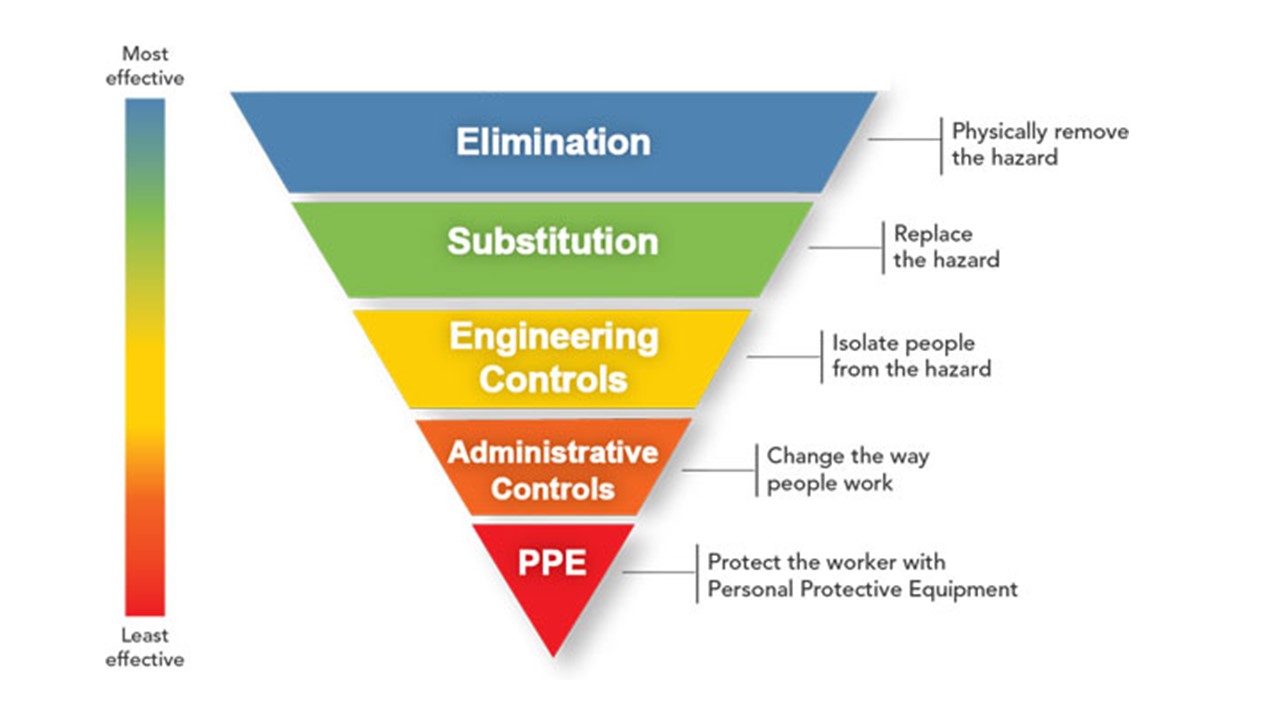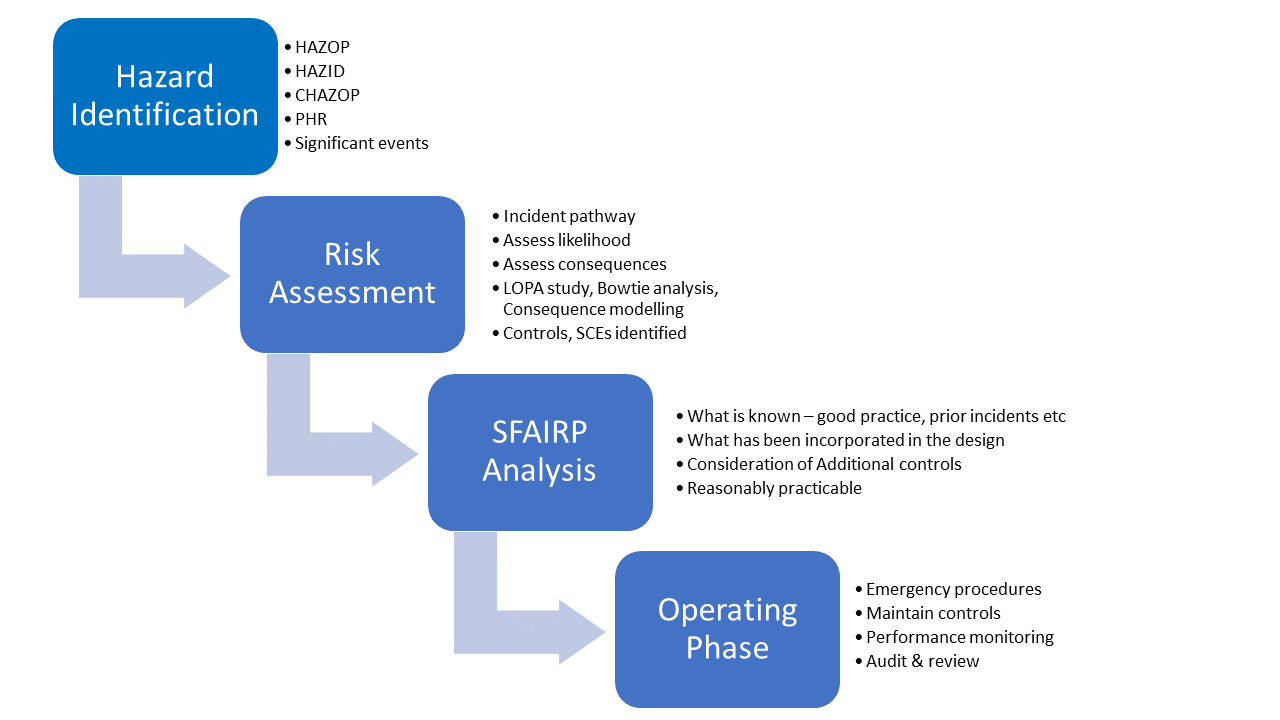A formal safety assessment is a series of steps needed to ensure we have effective controls in place to ensure we are managing the risks associated with major incident hazards. There are 4 main steps in a safety assessment including:
- Hazard Identification – This is the first step in the safety assessment process which aims to identify the significant process safety scenarios which need to be risk assessed. The techniques that typically used HAZOP, HAZID or PHRs.
- Risk Assessment of the significant events identified in the hazard identification step. The aim of this step is to assess the scenarios in details to determine the risk of each event happening. It involves a detailed assessment of the causes of each event the effectiveness of the controls in place to reduce the likelihood of them occurring. The techniques used here include LOPA, Bowtie’s, risk matricies and consequence modelling. The objective of the risk assessment is to identify the critical controls, assess their effectiveness and determine how risk gaps should be addressed.
- SFAIRP assessment – The objective of this step is to determine if the we have applied all practicable steps to minimise the risk of the scenario. This involves assessing if good practice and standards have been applied and are there any other additional controls that could be used.
- Operational assurance – Once the critical controls have been determined, performance standards must be developed to document their performance requirements. Monitoring and testing of the controls are aligned with the performance standards.
Contact us for any of your safety assessment needs.
Other useful links
- Training courses read more
- MHF Services read more
- Process safety consulting services read more
- Process Safety Learning Management System read more
- Safety Solutions New Zealand


